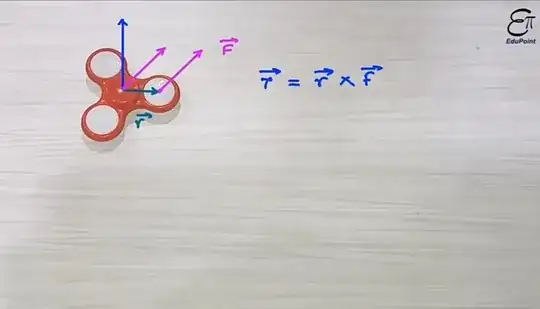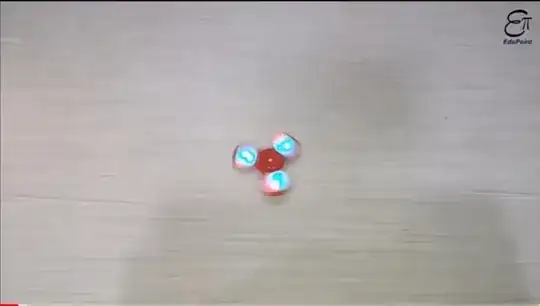It's really just a convention that happens to work out nicely.
Fundamentally, rotations should be thought of as acting in a plane. For example, your spinner is rotating in the $xy$-plane. If you apply a force in the $x$-direction at a point on the $y$-axis, this exerts a torque in the $xy$-plane, and its angular momentum in the $xy$-plane changes.
Thought of this way, the torque isn't really the same as the vectors you learn about in intro physics. Among other things, it has two directions associated with it, rather than the single direction associated with a vector. And if you're an introductory student, it might be annoying & frustrating to have to learn a whole new set of mathematical machinery to do rotational motion. Vectors can be tricky enough!
But fortunately, there's a bit of a "hack" that we've come up with to get around this. If you think about it, saying that "this object is rotating in the $xy$-plane" is equivalent to saying "this object's $z$-axis is fixed." What the cross product does is to map the two vectors defining a rotation plane ($\hat{\imath}$ and $\hat{\jmath}$) to a vector defining the fixed axis ($\hat{k}$). There's not necessarily any motion in the $z$-direction when this happens; it's just a way of mapping rotation planes (such as the $xy$-plane) to rotation axes (such as the $z$-axis.)

